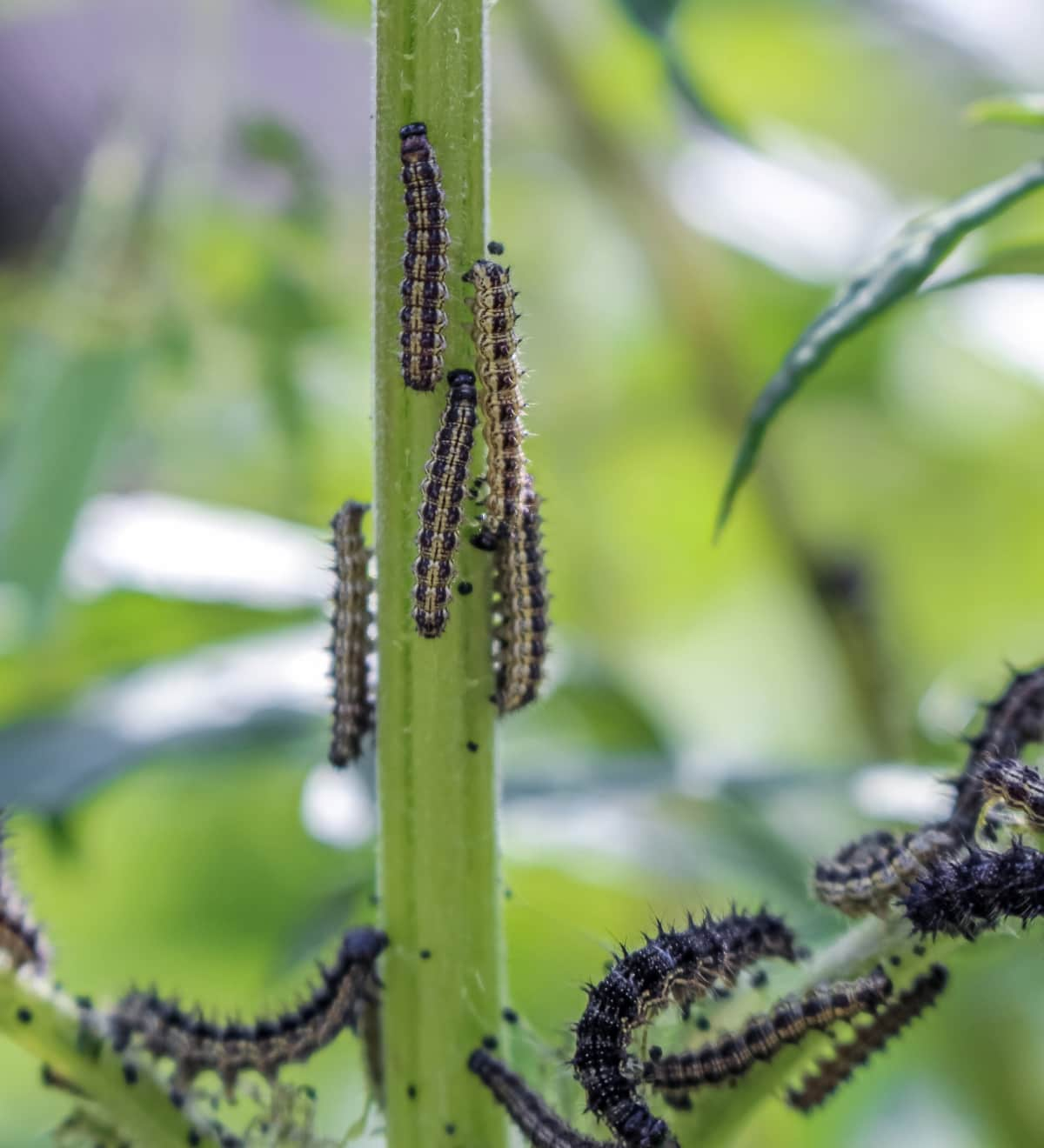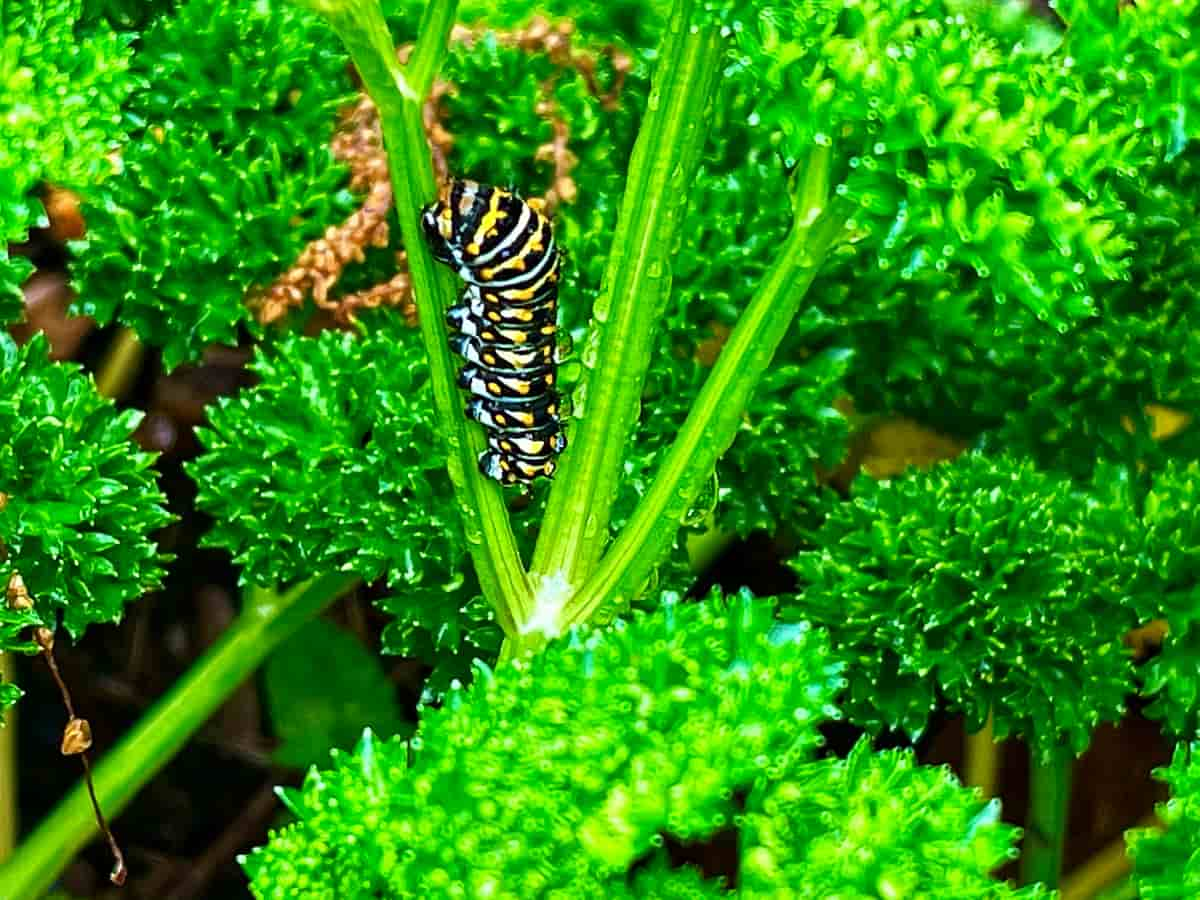Discover the natural marvel of neem oil as an effective solution for combating caterpillar infestations on plants. Extracted from the neem tree, this botanical remedy serves as a formidable deterrent against common garden pests. Embracing the power of nature, neem oil provides an eco-friendly alternative for those seeking to protect their plants without resorting to harsh chemicals. Dive into the realm of organic pest control and unlock the secrets of neem oil’s prowess in safeguarding your beloved greenery.

Neem Oil Application for Caterpillar Control
Neem Oil and its Benefits for Caterpillars
The active compounds in neem oil, such as azadirachtin, disrupt the life cycle of pests, impeding their growth and reproduction. What makes neem oil particularly appealing is its eco-friendly nature. Unlike synthetic pesticides that may harm beneficial insects, neem oil selectively targets harmful pests while leaving beneficial organisms unscathed. Additionally, it poses minimal risk to humans and animals, making it a safer alternative for gardeners who prioritize environmental sustainability.
As a versatile solution, neem oil not only serves as a deterrent but also has antifeedant properties, preventing caterpillars from devouring your plants. Harness the natural strength of neem oil to create a protective shield around your plants, ensuring the well-being of your plants without compromising the delicate balance of the ecosystem.
How to Prepare Neem Oil to Use on Caterpillars
Preparing neem oil for caterpillar control is a straightforward process that maximizes its efficacy. Begin by obtaining high-quality, cold-pressed neem oil, ensuring its purity and potency. To create a neem oil spray, dilute one to two teaspoons of neem oil in one liter of warm water. Add some dish soap liquid or insecticidal soap to help the oil emulsify and spread evenly on the plants. Thoroughly mix the solution and transfer it to a spray bottle. Shake well prior to each use to ensure good dispersion of the neem oil.
How to Apply Neem Oil on Caterpillars
Transfer the prepared neem oil solution to a spray bottle and shake well before use. Apply the neem oil spray generously on both sides of plant leaves, focusing on areas prone to caterpillar activity. Ensure thorough coverage, targeting the caterpillar-infested regions. Apply during the early morning or late evening for optimal absorption. Be consistent with treatments, repeating every 7-14 days, especially during peak pest seasons.
Monitor plant health and adjust the frequency if needed. Neem oil disrupts the caterpillar life cycle, serving as a natural deterrent without harming beneficial insects. Embrace this eco-friendly approach for a healthy garden while minimizing environmental impact.
Mixing and Dilution for the Right Concentration of Neem Oil for Caterpillars
For a neem oil spray, dilute one to two teaspoons of neem oil in one liter of warm water. Enhance emulsification by adding a few drops of liquid soap. Mix thoroughly, ensuring a well-blended solution. Transfer this neem oil mixture to a spray bottle and shake before application. Adjust concentrations based on the severity of the infestation and plant sensitivity. Always follow the product instructions and conduct a small patch test on a plant before widespread application.
In case you missed it: Neem Oil Application for Whiteflies Control: Natural Way to Get Rid of Whiteflies on Plants

How Long Does Neem Oil Stay Effective on Caterpillars?
The effectiveness of neem oil on caterpillars will vary on factors like environmental conditions, the specific caterpillar species, and the concentration of neem oil used. Generally, neem oil remains effective for about 7 to 14 days after application.
It’s important to note that neem oil works by disrupting the life cycle of pests rather than providing an immediate knockdown effect. Therefore, reapplication every 7-14 days is recommended to maintain a protective barrier against caterpillars and ensure continuous control. In periods of heavy rain or intense sunlight, more frequent applications may be necessary.
Using Neem Oil Along with Other Pest Control Methods
Employing neem oil in combination with other pest control methods creates a comprehensive and synergistic approach to safeguarding your garden. General predators, such as birds, assassin bugs, lacewings, predaceous ground beetles, and spiders, contribute to natural pest control by preying on caterpillars and other harmful insects. Encouraging the presence of these beneficial organisms establishes a balanced ecosystem within your garden.
Strategic crop rotation is another vital practice, disrupting the life cycles of pests and preventing the buildup of specific insect populations in the soil. This method minimizes the risk of caterpillar infestations over consecutive growing seasons. Horticultural oils, when used judiciously, complement neem oil in pest management. These oils smother pests by coating them, disrupting their respiration and feeding. Combining neem oil and horticultural oils enhances the spectrum of control, targeting different stages of pests’ life cycles.
Some Common Pests and Diseases that Neem Oil Can Control on Caterpillars
One of the primary targets for neem oil is the caterpillar itself, including species like cabbage worms, armyworms, and loopers. The active compounds in neem oil, particularly azadirachtin, disrupt the caterpillar’s growth and development, acting as an antifeedant and deterring them from devouring plant foliage.
This natural botanical extract also hinders the reproduction and molting of caterpillars, contributing to a substantial reduction in their population over time. In addition to caterpillar control, neem oil is adept at managing other pests that may accompany or exacerbate caterpillar infestations. Aphids, spider mites, and whiteflies, common nuisances in gardens, fall prey to the insecticidal properties of neem oil.
In case you missed it: Neem Oil Application for Aphids Control: Natural Way to Get Rid of Aphids on Plants

By disrupting the feeding and reproductive processes of these pests, neem oil provides a comprehensive solution to protect plants from various insect threats. Furthermore, neem oil’s fungicidal properties contribute to preventing fungal diseases, ensuring a holistic approach to plant health and vitality in the face of potential caterpillar-related challenges.
How to Monitor the Effectiveness of Neem Oil on Caterpillars
Begin by observing plant foliage for signs of reduced caterpillar activity, such as diminished feeding damage and a decline in the number of larvae. Check both sides of the leaves, as caterpillars often feed on the undersides. Record and compare the frequency of caterpillar sightings before and after neem oil application.
Inspect caterpillars for signs of distress, altered behavior, or developmental abnormalities. Keep an eye on the overall health and vitality of treated plants, as neem oil should not negatively impact non-target organisms or the plant itself. Adjust the application frequency if needed, considering factors such as weather conditions and the severity of infestation.
Safety Precautions to Take when Using Neem Oil on Caterpillars
- Wear protective clothing, including hand gloves and eyewear, when handling neem oil to prevent skin or eye irritation.
- Avoid inhaling neem oil spray, and apply it in a well-ventilated area to minimize respiratory exposure.
- Always adhere to recommended concentrations and application guidelines to prevent overuse, which could harm beneficial insects or plants.
- Apply neem oil during mild weather conditions, avoiding extreme temperatures, to ensure the safety of both plants and beneficial insects.
- Keep neem oil out of reach of children and pets, and store it in a dark, cool, dry place away from direct sunlight.
- Follow label instructions carefully, as different neem oil products may have specific guidelines for dilution and application.
In case you missed it: Neem Oil Application for Thrips Control: Natural Way to Get Rid of Thrips on Plants

Conclusion
In conclusion, harnessing the natural prowess of neem oil emerges as an eco-friendly and effective strategy for combatting caterpillar infestations on plants. This botanical solution, derived from the neem tree, not only disrupts the pests’ life cycle but also ensures the well-being of the overall garden ecosystem. Embrace the power of nature in pest control, fostering a healthy and thriving garden without compromising environmental sustainability.
- Feed Your Flock for Less: Top 10 Tips to Save on Chicken Feed
- Ultimate Guide to Ossabaw Island Hog: Breeding, Raising, Diet, and Care
- Hatching Answers: The Top 10 Reasons Your Chickens Aren’t Laying Eggs
- Eggs and Economics: Breaking Down the Cost of Raising Backyard Chickens
- Defend Your Greens: Proven Methods to Keep Iguanas Out of Your Garden
- Ultimate Guide to Cinnamon Queen Chicken: A Comprehensive Guide for Beginners
- Ultimate Guide to California Tan Chicken: Breeding, Raising, Diet, Egg-Production and Care
- Ultimate Guide to Marsh Daisy Chicken: Breeding, Raising, Diet, and Care
- 10 Types of Chicken Farming Businesses You Can Start for Profits